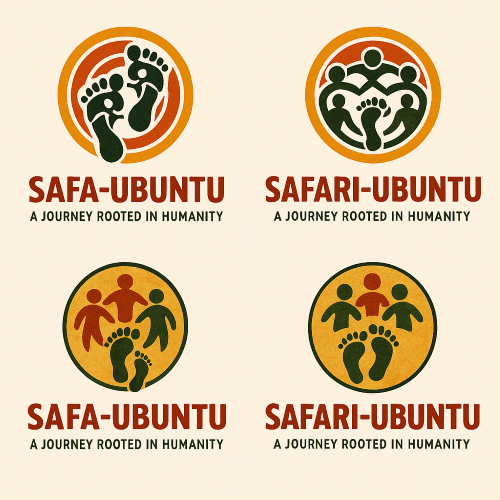Ethiopia Cradle of Humanity-

✓ Oldest Human Fossils:
Ethiopia is home to "Lucy" (Australopithecus afarensis), discovered in 1974 in the Afar region, dating back 3.2 million years.
Other important finds like Ardi (Ardipithecus ramidus, 4.4 million years old) show that early human ancestors lived and evolved in Ethiopia.
This places Ethiopia at the center of human origins, earning it the title “Cradle of Humanity.”
Ethiopia: Cradle of Humanity
"The Ancient Land Where the Human Journey Began"
Long before the rise of cities, kingdoms, and civilizations, before languages were spoken or tools were crafted, a land in the Horn of Africa quietly bore witness to the first steps of humankind. That land is Ethiopia — a nation not only rich in culture and history, but deeply rooted in the very origins of the human species.
Today, Ethiopia is recognized globally as the “Cradle of Humanity,” and for good reason. Beneath its ancient soil lie secrets of the earliest chapters of human evolution — a story told by fossilized bones, weathered rocks, and preserved footprints that stretch across millennia.
The Discovery of Lucy – A Milestone in Human History
In 1974, a team of paleoanthropologists led by Dr. Donald Johanson made an extraordinary discovery in the Afar region of Ethiopia. There, partially buried in ancient sediment, lay the remains of a small, female hominid — later named “Lucy.”
Her scientific name: Australopithecus afarensis.
Her age: 3.2 million years old.
What made Lucy special wasn’t just her age, but what she revealed: she walked upright on two legs. Her pelvis, spine, and leg bones showed that bipedalism — one of the defining traits of modern humans — existed long before the appearance of our own species, Homo sapiens. Lucy was not human as we know it, but she was one of our earliest ancestors, a crucial link in the chain of evolution.
Lucy's discovery sent shockwaves through the scientific world. She wasn’t just an isolated find — she was a window into a time when humanity was still taking shape.
Ardi: Even Older Footsteps
But Ethiopia’s secrets didn’t stop with Lucy.
In 1994, scientists in the same Afar region unearthed something even more ancient: the partial skeleton of Ardipithecus ramidus, nicknamed “Ardi.”
-
Estimated age: 4.4 million years
-
Physical features: Ardi had a mix of traits — she could walk upright but also had opposable toes, suggesting she still climbed trees.
-
Importance: Ardi pushed the timeline of human evolution back further than ever before, showing that the journey from tree-dwelling apes to upright-walking humans began much earlier than previously believed.
Ardi helped fill a mysterious gap in our evolutionary history. She showed that the last common ancestor between humans and chimpanzees was likely more complex than imagined — not a simple ape-like creature, but an adaptable being evolving in the diverse landscapes of ancient Ethiopia.
Ethiopia’s Lasting Legacy in Human Origins
Taken together, Lucy and Ardi form the foundation of Ethiopia’s extraordinary claim as the Cradle of Humanity. These discoveries — and dozens of others found in Ethiopia's fossil-rich valleys — have fundamentally reshaped our understanding of where we come from.
Why Ethiopia?
The answer lies in its unique geography. The Great Rift Valley, a vast tectonic trench running through East Africa, has preserved layers of sediment for millions of years. These layers have become a treasure trove for fossil hunters, offering a nearly continuous record of evolution from pre-human ancestors to early humans.
Moreover, the changing environments of ancient Ethiopia — shifting from forests to grasslands — likely played a key role in shaping the evolution of traits like bipedalism, tool use, and social behavior.
More Than Bones — A Living Legacy
Ethiopia’s story isn't just ancient. It’s living.
The people of Ethiopia today carry a deep genetic and cultural heritage, part of a lineage that stretches back to the dawn of humanity. From its early ancestors to its ancient civilizations and enduring independence, Ethiopia continues to be a pillar of African identity and pride.
Its landscapes are not just beautiful — they are sacred, for they cradled the first walkers, thinkers, and dreamers of our species.
Conclusion: The First Footprints
To walk the highlands and valleys of Ethiopia is to walk in the footsteps of those who first stood upright and looked to the horizon.
In the bones of Lucy, in the story of Ardi, and in the red earth of Afar, we find not just the past — but ourselves.
Ethiopia is not just a place on the map.
It is where the human journey truly began.
It is, and will always be, the Cradle of Humanity.
By John Ikeji
#ubuntusafacom #ubuntusafacom ubuntusafa.com
- Questions and Answers
- Opinion
- Motivational and Inspiring Story
- Technology
- Live and Let live
- Focus
- Geopolitics
- Military-Arms/Equipment
- الحماية
- Economy
- Beasts of Nations
- Machine Tools-The “Mother Industry”
- Art
- Causes
- Crafts
- Dance
- Drinks
- Film/Movie
- Fitness
- Food
- الألعاب
- Gardening
- Health
- الرئيسية
- Literature
- Music
- Networking
- أخرى
- Party
- Religion
- Shopping
- Sports
- Theater
- Health and Wellness
- News
- Culture

